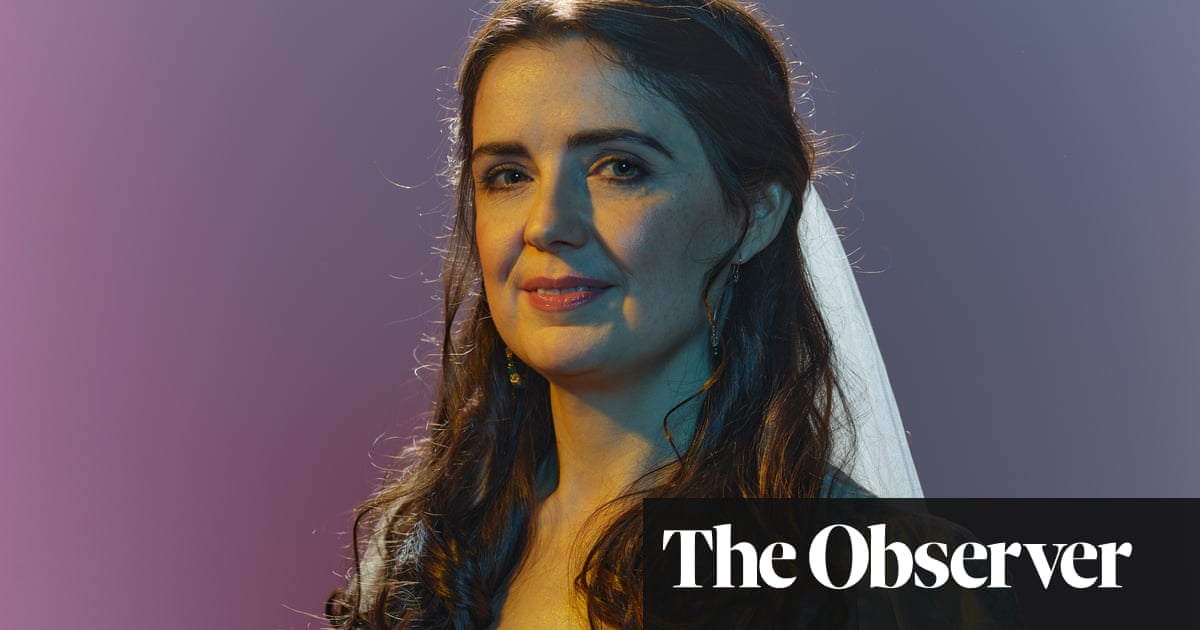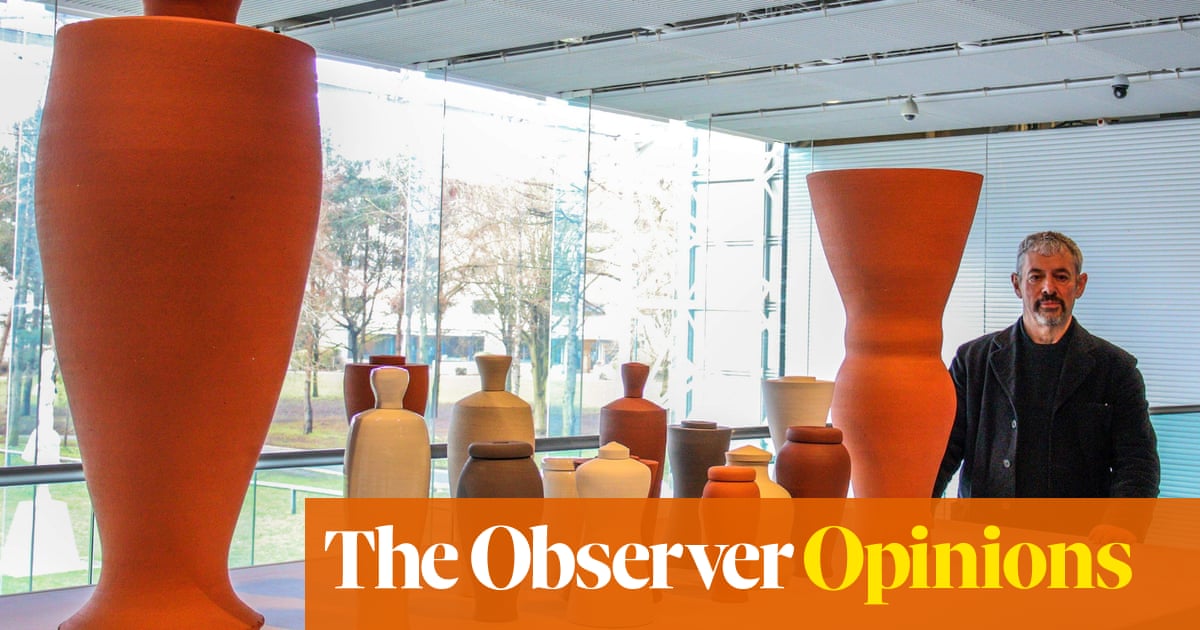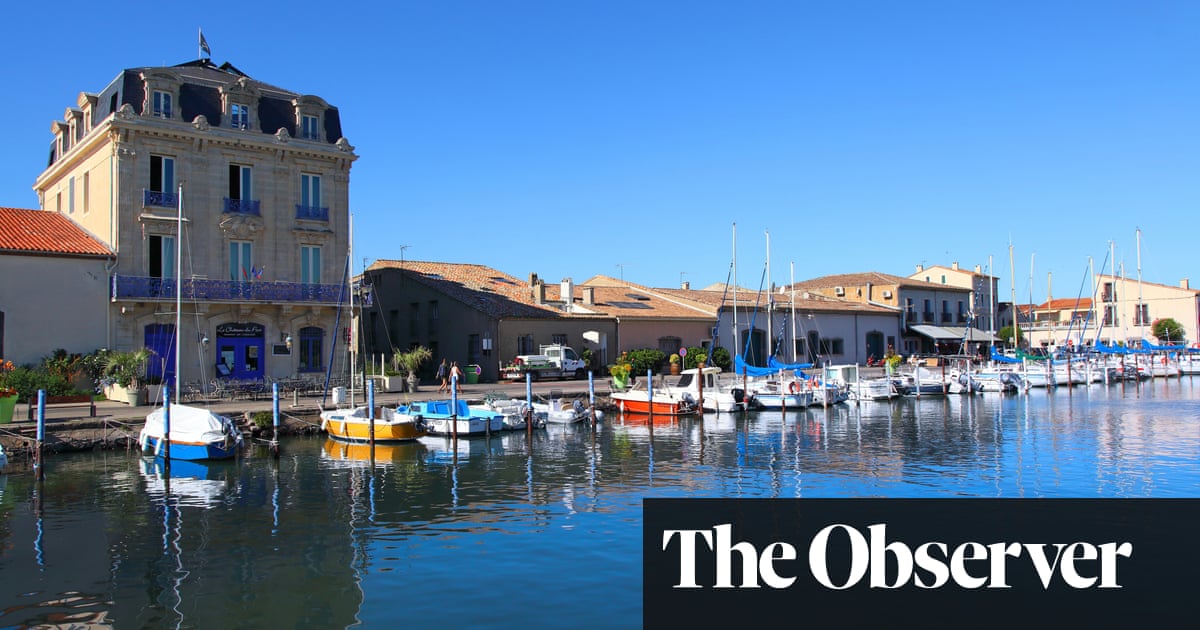
Rachael Lennon married her wife in a medieval hall in Northumberland four years after same-sex marriages became legal. It was a June day in 2017, and it rained until just before 2pm, when the wedding began. But hadn’t it really begun, in a way, when her parents got married, or her grandmother, or in 1840, when Victoria’s white wedding to Albert defined a “traditional” wedding in the West for decades to follow, or six years earlier when Anne Lister and Ann Walker married through taking communion together, or in the Middle Ages, when the Christian church first monopolised what a marriage should be? Lennon’s wedding, as all weddings are, came loaded with romance, tradition, expectations of transformation and the weight of centuries of history.
In 2002, a counsellor from Relate told the Daily Mail that marriage would “be extinct in 30 years”. The clock is ticking. Except – anti-marriage crusades have stretched from second-century north Africa to 20th-century Israel, and all of them have failed. The bells still ring: in the UK, around half a million people get married every year. Despite the fact that more than 40% of weddings will end in divorce, most people still choose to marry at some point in their lives. But the institution itself has expanded and contracted and reshaped itself so much over the years that a marriage often means different things to different people – sometimes even those living in the same house.
Marriages have happened to create family alliances or in order to parent a child or, in 2008, between a woman and the Eiffel Tower. In areas of China up until the early 20th century, women could marry a dead man. Weddings have involved kidnappings and the auctioning of brides, and the sharing of cake or similar ceremonial dishes – Toby Carveries has just announced a new wedding reception deal, at a reasonable £9.99 a head. And they continue to evolve. When Gloria Steinem discussed her decision to marry at 66, she explained, “I didn’t change. Marriage changed… It is possible to make an equal marriage.”
The year of Lennon’s wedding, as the National Trust’s public programmes curator, she had organised their Prejudice and Pride programme and inadvertently started a small war. It began when she read a guidebook about a stately home that discussed a “confirmed bachelor from the 18th century, who’d never married, but had had close personal relationships with his handsome cousin”. She grins, raising her eyebrows – she’s in her office, behind her garage, behind the house in Durham she now shares with her wife and two young children. “So I started trying to advocate and push, and eventually created the inclusive histories programme at the National Trust. And it… hit the news.”
Those were the early days of Britain’s current culture wars; the programme was attacked for its “woke agenda” and Lennon herself, as the historian behind it, was subject to a “brutal” amount of homophobia. “I hadn’t realised that the idea of ‘rewriting our history’ would be so controversial. Because what do people think historians do? We are always researching, always looking again at who’s been missed, or misrepresented. Every version of history we’ve inherited has bias within it.” This was something she kept returning to when she started researching marriage and next week her book, Wedded Wife, will be published. Nothing about marriage, she soon realised, is inevitable, natural or fated.
The idea for the book came as she and her girlfriend planned their wedding. Ordering flowers, thinking about speeches, Lennon found herself having to come out again and again, to the florists, venues, dress shops, moving in and out of traditions as they prepared to join an institution with a long history of both oppressing women and excluding LGBTQ+ people. In all her work, Lennon links women and the LGBTQ+ community, explaining it’s a natural thing to do when you’re looking at real lives through real histories; any difference between them, she’s found, is artificial, constructed.
And choosing a dress, she began to question herself – sure, love is great, but why get married? So she did what she does and, in order to move forward, started to look back. At the good marriage stories from the past, the people who defied expectations, “and also the bad ones – the really dark histories of marriage and sad lived experiences around marriage. I realised every injustice and struggle and oppression I found throughout history is still existing somewhere in the world through marriage today. I was trying to get under the skin of it.”
When she began to write it all down, though, she encountered a problem. It was almost impossible to define the history of marriage. “Marriage has existed in almost every society through all time and place in recorded history. But there’s still no consensus – anthropologists and historians really struggle to define it at all. It’s always between two people? Well, obviously polygamy is a big part of the history. Or, a traditional marriage is between a man and a woman? Well – same sex-marriages have happened in every populated continent. Marriage is more diverse and broader than most people think.”
Among the Barí people in Venezuela, women took multiple husbands, believing it provided greater security for their children. In West Africa, despite a legacy of European colonialism and persecution, “female husbands” have been routinely recognised as the parent of their wives’ children. But in Europe, as the Christian church grew to dominate from the Middle Ages, the diversity of history’s marriage practices began to be obscured, leading to today’s common idea that marriage is between a man and a woman, that the two have different roles, and that rather than a political construction, it is natural, inevitable and desirable. Lennon is particularly interested in the people who challenged that idea: “The people who tried to make their own choices and find their own way in it”.
In 1777, Mary Eleanor Bowes was a 27-year-old widow and one of the wealthiest women in Britain. When Andrew Robinson Stoney turned up with seemingly fatal injuries, asking that she grant his dying wish – to be married to her – she agreed, and he was carried into the church on his deathbed. Except, he appeared to make a miraculous recovery and, now the owner of her fortune, he abused her, gambled her money, restricted access to her children, and imprisoned her. After eight years, “Her servants gave her money to escape. And then when she was trying to legally escape, of course it was all of her money that paid his legal fees, and, ultimately, she didn’t have access to her children.”
Children are a thread that runs through these stories of women who fought for change. While she was researching them Lennon had a toddler, and was pregnant again, “Which made it just hit so hard! The knowledge that losing their kids was the cost…” She tells me about Annie Besant, who in 1877 had her daughter removed from her when she was convicted of providing married women with access to information about contraception; Besant was judged unfit to raise her. And Mary Wollstonecraft’s sister, Eliza, who had a baby in 1783. “When Mary arrived, she found that Eliza was suffering from what was likely postpartum depression. She was scared of her husband, who she suspected had been sexually and physically abusive.” She took Eliza away, but didn’t have the right to take her daughter, who died before the age of one. Wollstonecraft believed the baby had been intentionally neglected by its father as revenge on his wife.
“That story massively shaped Wollstonecraft’s view on marriage – she went on to write incredibly influential tracts on gender equality and marriage and what she called the ‘divine right of husbands’. So these are stories of progress through suffering.” But there are others where people just… found their own way. Like Vita Sackville-West, who maintained an open marriage, and Elizabeth Garrett Anderson, who made an agreement with her husband that marriage wouldn’t hold her back from her career. Ultimately, she became the first female surgeon in the country and a very early female politician, always maintaining control of her own money. And Lucy Stone, who, at the end of the 19th century, stood up with her fiancé during their wedding and gave a speech against traditional marriage at the altar. “She fought against coverture, the idea that a woman’s identity should just be subsumed into her husband; the idea that she didn’t legally exist separately from him any more. Isn’t it inspiring?”
And – is progress still being made? She nods, but warily. “We’ve moved closer towards equality in marriage in lots of different ways. But one of the things I found was the sense that, that’s not inevitable.” It relies, she says, on today’s Lucy Stones – “The activists who’ve fought hard and struggled to change marriage in the face of massive resistance”. Does she see resistance at the moment? “Yes!” she hoots. “Have you heard of the ‘tradwife’ movement?” These are the modern (usually white, middle-class) women who stay home in order to look after their children, husband and house, often broadcasting their cleaning and baking efforts on social media. “They’re saying that’s the traditional way to be a wife, and that is desirable, and how life should be. They’re really closely connected to things like white supremacy and other dark elements of politics in the UK and US, based on this very narrow idea that doesn’t reflect the history.”
The 1950s idea of housewifery came from marketing campaigns aimed to get women out of the workplace and back into their homes after the Second World War. “It’s a very constructed idea, like the Victorian angel in the house. Most women worked in Victorian times and, across the Empire, women of colour weren’t living any of these ideas. So they’re profiting from that lack of awareness of this history, and saying this is the traditional way.”
A key message of Lennon’s book is: there is no traditional way to be wife. And if there was, it would not be desirable. Tradition, she concludes, is the last defence of the indefensible.
One of most interesting things we discover by digging down into the mud of marriage, is how it exposes the absurdity of maintaining rules based on ancient ideas of gender and sex. Lennon remembers being introduced to a woman when she started a new job and, “upon hearing their surname, another colleague piped up, ‘Oh, have you got married?’ ‘No,’ said the woman quietly, ‘I’ve got divorced.’ That was tough to witness,” she says. “But I found writing the section on women giving up their family name the easiest to write, because I have such strong feelings about it: 90% of women who get married in the UK today still give up their name. It’s so extreme, right? And I don’t believe that 90% would really make that choice in a considered way. It’s not the way women enter marriage in so many other parts of the world. And even in the past, powerful women who had prestigious surnames didn’t give them up when they married.”
There are the practical consequences – the fact you may have built a career under this name, the question of what to do if you divorce – but there are existential consequences for many women, too, who feel as if they are giving up a part of their identity. When Lennon talks about it, the idea seems suddenly ancient and bonkers, like blackened teeth or trepanning.
Looking back at the history of marriage, Lennon has started to think about its future. “Gender,” she says, “isn’t the best criteria by which to assign roles in our lives. And yet we still do it a lot.” Weddings are planned by women, to the extent that there have been 14 series of Don’t Tell The Bride, a show that hinges on the ludicrousness of men taking charge. Yet men are expected to propose – women are empowered to suggest marriage to their boyfriends only on a Leap Day. “The active role is still taken by the man, whether walking down the aisle or doing the speech, but that doesn’t sit comfortably with a lot of our 21st-century values.” Neither do big consumerist weddings with plastic decorations and dresses people wear only once. “And the more same-sex marriages that take place – particularly as younger generations challenge gender binaries more in their own identities, and you’ve got more people not identified as either a bride or a groom – the more it unpicks the whole thing.”
But there are also deeper problems that need to be addressed. Women and children are still forced into marriage in the UK every year. “Domestic abuse, honour killings – there are some really dark practices still going on.” When Lennon was writing her book, Afghanistan was falling again to the Taliban, and Roe v Wade was repealed in America. “I had this heavy feeling. As much as I want the future to be more equitable, and fairer and more compassionate and flexible, and more reflective of the diversity of practice in the past, it’s not inevitable that that will happen. And that’s why looking at the history of these things is so important, because it’s only by understanding the history that we can really challenge the future.”
Did Lennon find an answer to the question of why she wanted to get married? “Well,” she smiles, ready to count the reasons. “Practical things: I wanted to have children, and my wife would be more clearly recognised as the co-parent of our children. There’s nostalgia, too. My parents got married, I watched Disney as a child, I really liked Jane Austen novels…” she sighs. “Then there’s the sense that it’s a romantic thing to do. We fall in love and we want to show everyone that this relationship is different. A statement to the world.” She shrugs, a little sheepish.
Though the stories she discovered are often shocking, lives bruised by expectation and tradition, there’s liberation there, too, and a chance to look at what love is: for the first time in our history, marriage is optional for most people, and needn’t define us. We can choose whether to enter it and, if we do, we can choose what it should look like, challenging illusions from the past, or leaning into fairytales. Marriage, Lennon promises, can be whatever we choose to make of it.












